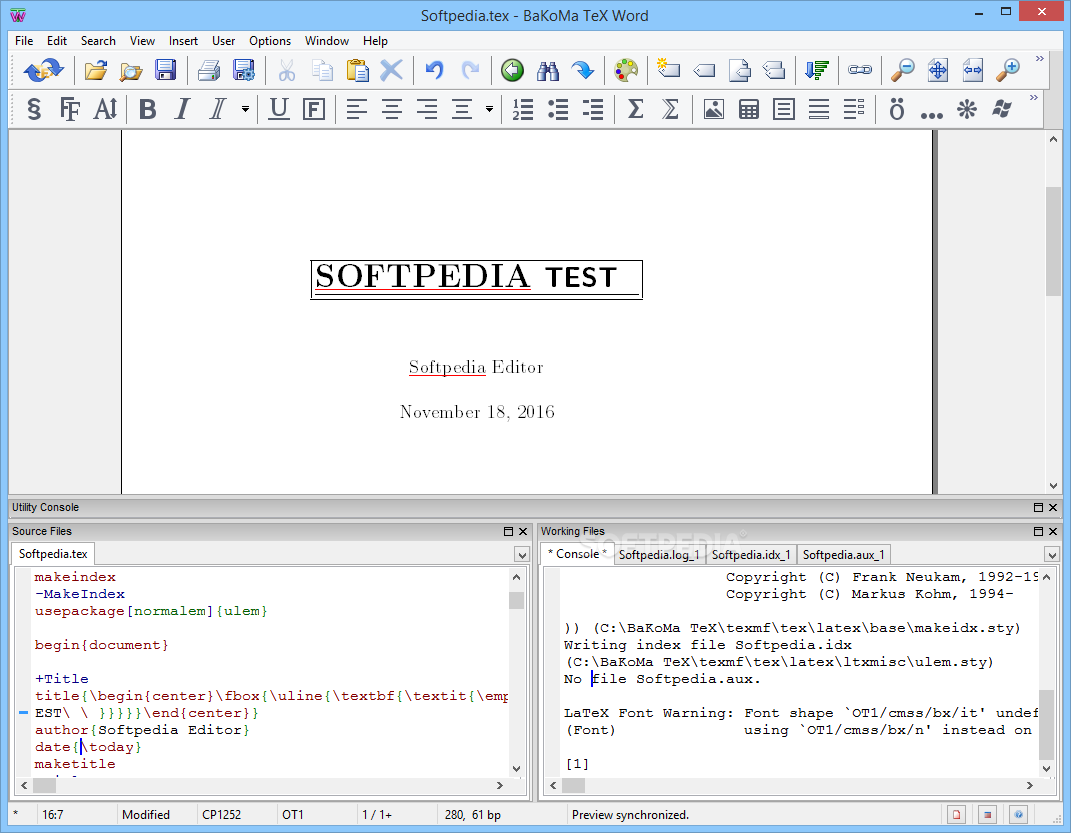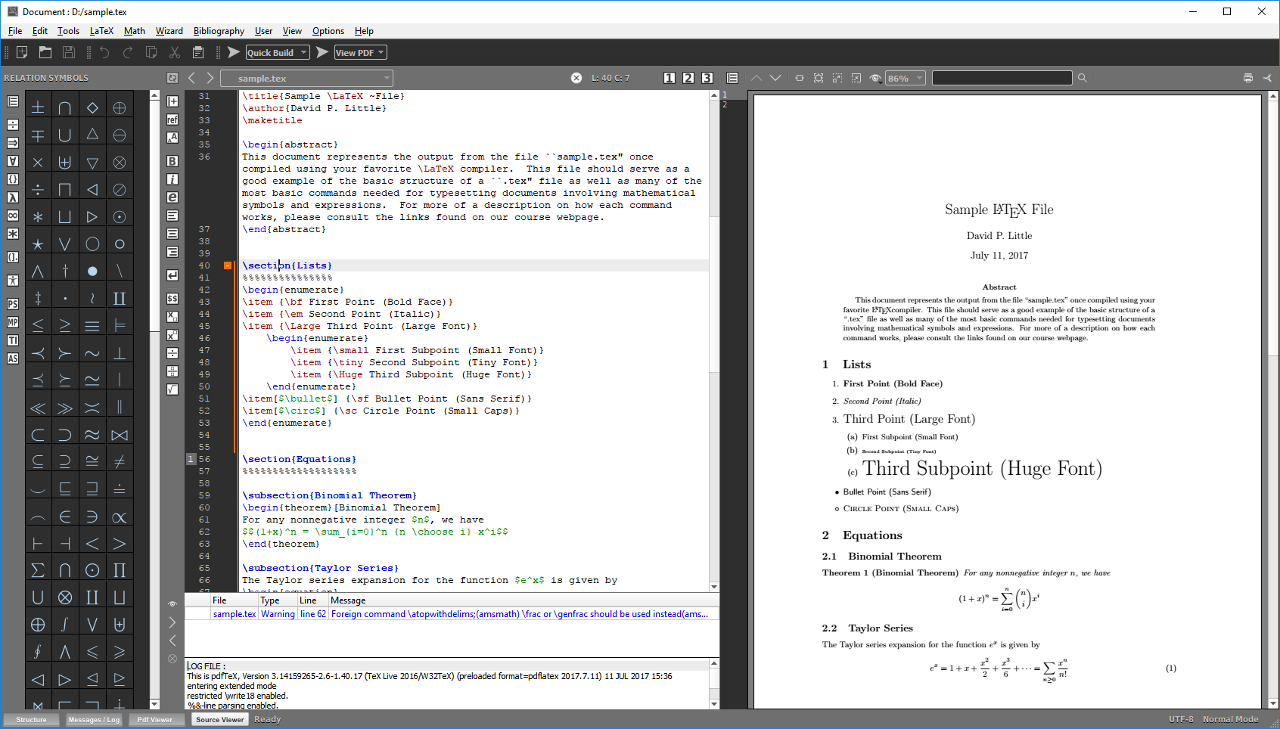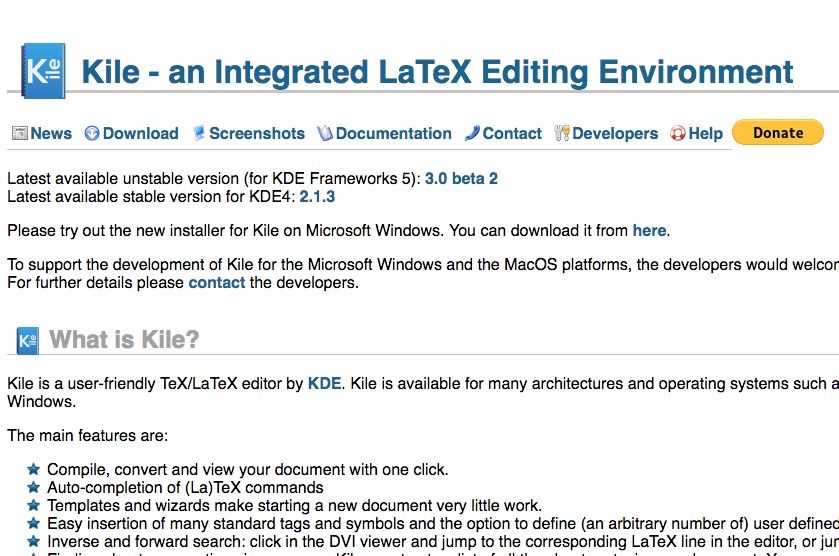
- #WYSIWYG LATEX EDITOR WINDOWS PDF#
- #WYSIWYG LATEX EDITOR WINDOWS CODE#
- #WYSIWYG LATEX EDITOR WINDOWS DOWNLOAD#
Nevertheless it's very impressive as it is.
#WYSIWYG LATEX EDITOR WINDOWS PDF#
a feature to fully update the PDF after a (very) long typing pause (or manual user request) seems desirable.

This one seems to have its share of minor bugs (some artefacts seem to be visible in their published paper too!), so e.g. All these projects have had to grapple with the same issues (achieving quiescence etc). There was also a very impressive demo at this year's TUG meeting, by David Fuchs (who Knuth described as his “right-hand man” on the TeX project).
This sort of WYSIWYG editing for LaTeX has been done in a couple of proprietary systems before (BaKoMa TeX / Texpad), and some ancient systems as well (VorTeX), but they've been buggy in my limited experience. Heck I even pasted in xii.tex (without the final "jbye") and it works (can click on “partridge” in the PDF and go to the corresponding part of the source). #WYSIWYG LATEX EDITOR WINDOWS DOWNLOAD#
But otherwise most of the standard LaTeX features and packages seem to work (labels and cross-references, etc) you can \usepackage anything and it will download the corresponding files but no data leaves your system everything happens in the browser. However my guess is that this is just an issue with their PDF rendering (per the paper they use something like Pdf2htmlEX rather than pdf.js, for speed), and not a fundamental issue. Looks like it has some limitations as far as PS/PDF specials goes (aka “drivers” in the TeX world), so TikZ or tcolorbox don't work too well for example. (TeX as originally written by Knuth does not use malloc() or equivalent it does all its own allocation out of giant arrays called "mem" and "str".) They can then look up this bookkeeping when the token lists are being shipped out to PDF format. In the paper, Figure 5 and the surrounding text describe how TeX was modified (the part of most interest to me) it's really clever! To avoid modifying the data structures and introducing new bugs, they hook only into TeX's internal allocation functions for tokens. Based on a quick skim so far, the paper looks fantastic, looking forward to reading it in more detail. As mentioned in the FAQ/docs page, this is the work of just two people from New Zealand (Gerald Weber and Elliott Wen), and they have a paper about it from 2018 (“SwiftLaTeX: Exploring Web-based True WYSIWYG Editing for Digital Publishing”, DOI: 10.1145/3209280.3209522). Not sure if they plan to share more or not. #WYSIWYG LATEX EDITOR WINDOWS CODE#
Not all the source code is on GitHub crucially their modification of the TeX engine seems to be distributed only as the two `.wasm` binary files).

Virtual Fonts are used by TeX or LaTeX and are used to tell the program that simple character mapping isn't being used as is the case with one to one. LaTeX is a system used to prepare documents for typesetting and is usually used for Technical or Scientific documents. pk file extension, these are compressed typeface of fonts. LaTeX is used for typesetting and makes use of files that have the. These files contain instructions describing the precise. tex files are used by the TeX typesetting system, most commonly with the LaTeX macro package.

LaTeX Editor is designed to work on Windows® 95/98/Me/NT4/2000/XP/2003/Vista operating systems.







 0 kommentar(er)
0 kommentar(er)
